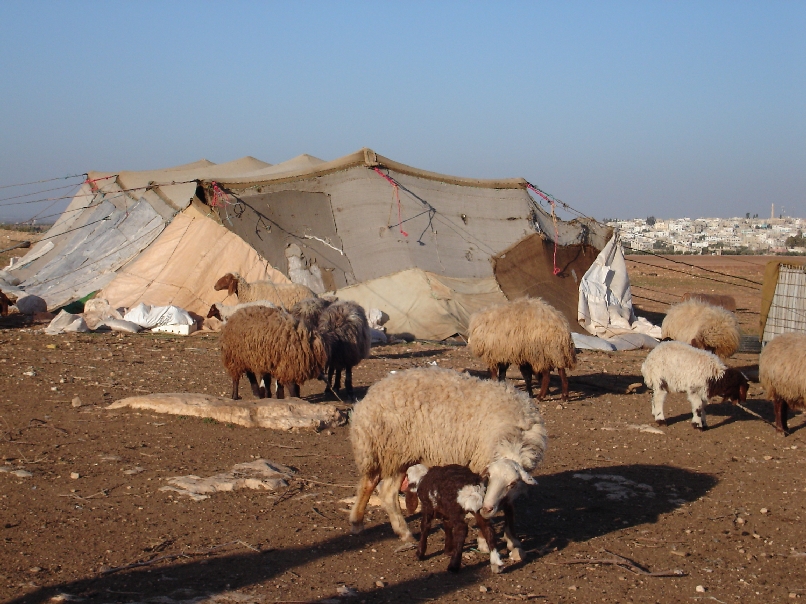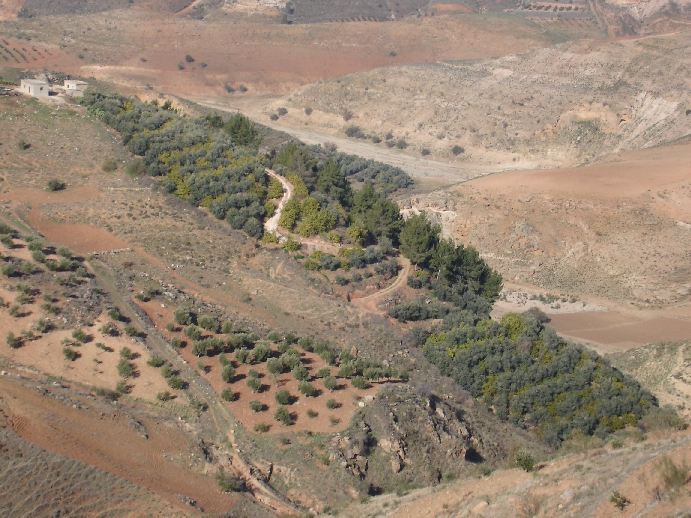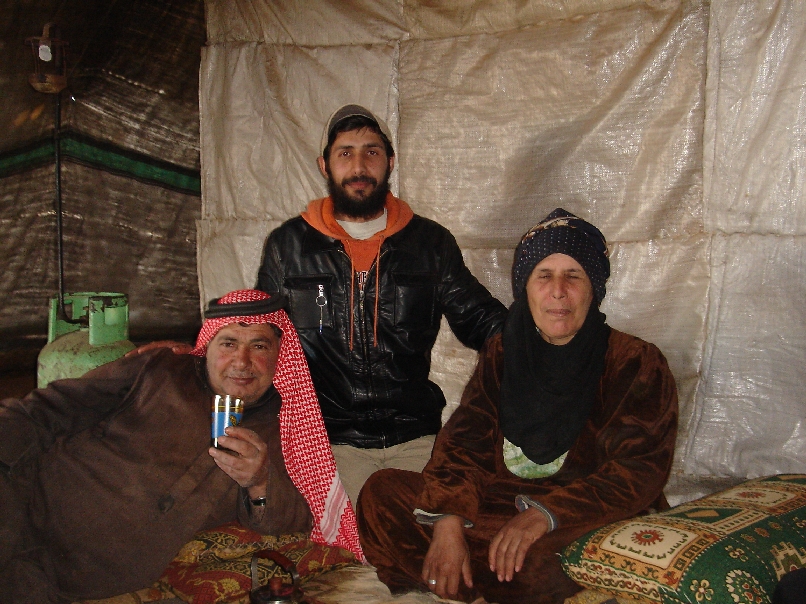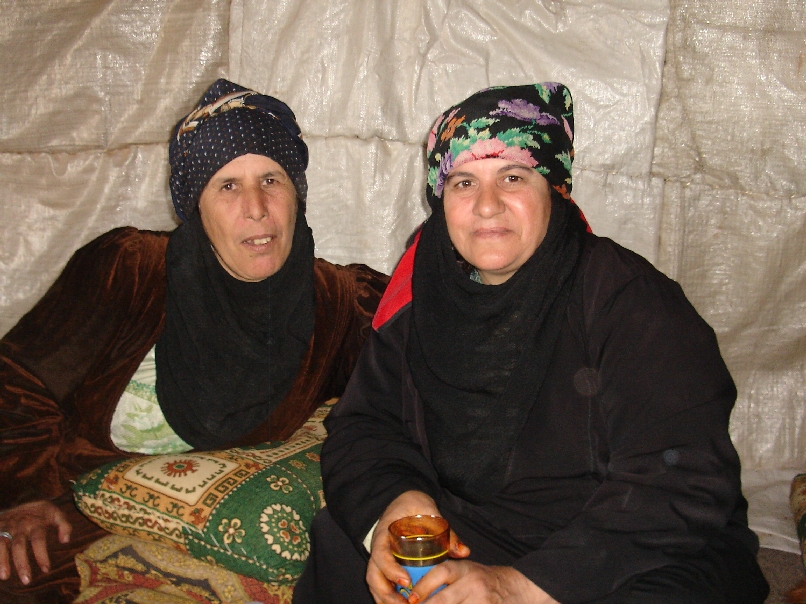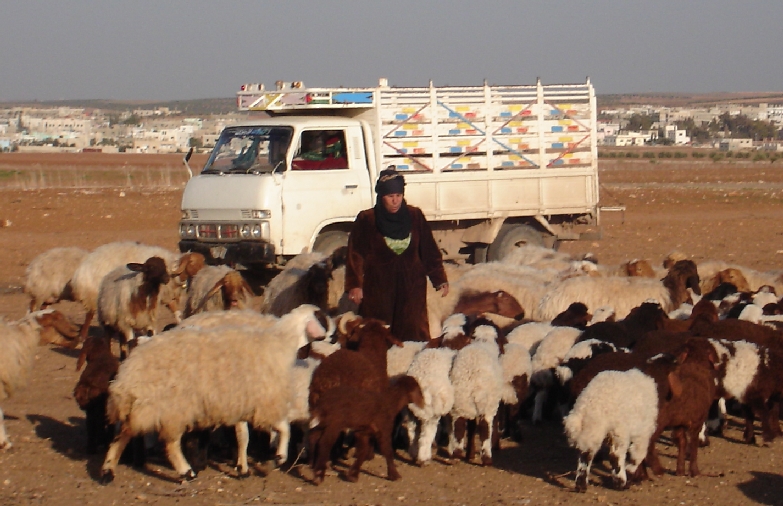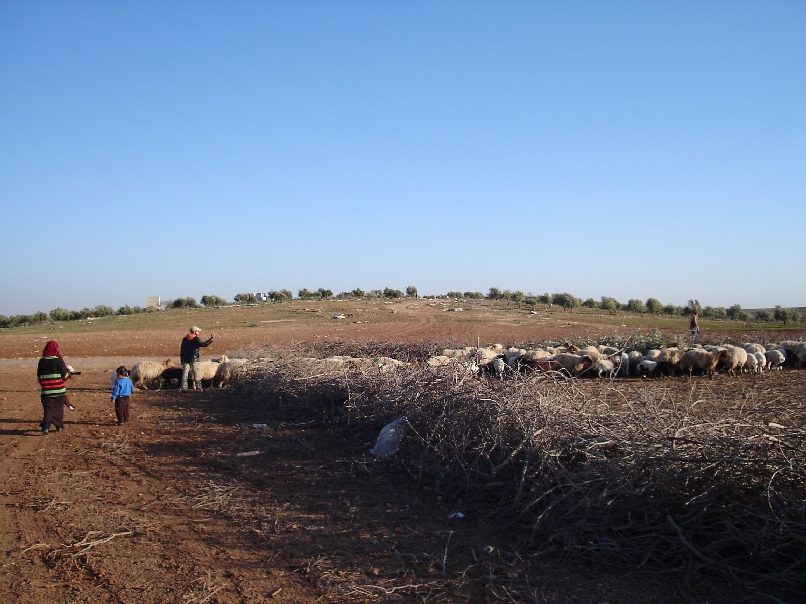

One of the best known groups from Jordan’s population is the Bedouin. As they are known in Arabic, the Bedu, or “desert dwellers,” endure the desert and have learned to survive its unforgiving climate. It is difficult to count Bedouins, but it is generally known that the majority of Jordan’s population is of Bedouin origin.
Most of Jordan’s Bedouin live in the vast wasteland that extends east from the Desert Highway. All throughout the south and east of the country, their communities are marked by characteristic black goat-hair tents. These are known as beit al-sha’ar, or “house of hair.”
Bedouins are often stereotyped as constantly wandering the desert in search of water and food for their flocks. This is only partly true. Only a small portion of Bedouin can still be regarded as true nomads, while many have settled down to cultivate crops rather than drive their animals across the desert. Most Bedouin have combined the two lifestyles to some degree. Many Bedouins have small trucks to haul water to their herds and their tents. Some even have battery powered televisions.
It can be said that many of the characteristics of the Jordanian and Arab society are found in their strongest form in Bedouin culture. For instance, Bedouins are most famous for their hospitality, and it is part of their creed-rooted in the harshness of desert life-that no traveller is turned away. The tribal structure of Arab society is also most visible among the Bedouins, where the clan is at the center of social life. Each Bedouin family has its own tent, a collection (hayy) of which constitutes a clan (qawm). A number of these clans make up a tribe, or qabila.
We were lucky enough to spend the afternoon with our friend Mohammed Sirhan at his father’s tent in northern Jordan. His father and mother in the photos below were both originally from Syria before the Jordan/Syria borders were enforced. He herds around 200 sheep and has been in this location for 6 years. The family photo was taken inside their living room which has an open fire in the middle to keep warm. The tent has two other rooms, a kitchen and an area for sleeping. When only men are present as guests, the women must retreat to the sleeping room.
They have a pen to hold their animals at night after coming in from the pastures. In the surrounding fields there are olive orchards and when the farmers prune the trees they forage for the clippings and let the sheep eat the leaves. When the leaves are gone they pile the sticks and increase the height of their "fence." When firewood is needed the family gathers the largest branches from the dead olive fence to be burned on their fire pit (inside the tent). With all that said, I suppose our lives are too complicated.
We got a chuckle comparing the Bedouin lifestyle to Cowan Farms. Every time a car would pass along their dirt road, Mrs. Sirhan would jump up and see who was driving by, just like JoDon’s Mom does at the farm. Although the Bedouins are outside of town, like Cowan Farms, there was a steady stream of people coming by to get some wood, drop by to say “hello”, etc. All that was missing was some Mexicans buying milk!
Most of Jordan’s Bedouin live in the vast wasteland that extends east from the Desert Highway. All throughout the south and east of the country, their communities are marked by characteristic black goat-hair tents. These are known as beit al-sha’ar, or “house of hair.”
Bedouins are often stereotyped as constantly wandering the desert in search of water and food for their flocks. This is only partly true. Only a small portion of Bedouin can still be regarded as true nomads, while many have settled down to cultivate crops rather than drive their animals across the desert. Most Bedouin have combined the two lifestyles to some degree. Many Bedouins have small trucks to haul water to their herds and their tents. Some even have battery powered televisions.
It can be said that many of the characteristics of the Jordanian and Arab society are found in their strongest form in Bedouin culture. For instance, Bedouins are most famous for their hospitality, and it is part of their creed-rooted in the harshness of desert life-that no traveller is turned away. The tribal structure of Arab society is also most visible among the Bedouins, where the clan is at the center of social life. Each Bedouin family has its own tent, a collection (hayy) of which constitutes a clan (qawm). A number of these clans make up a tribe, or qabila.
We were lucky enough to spend the afternoon with our friend Mohammed Sirhan at his father’s tent in northern Jordan. His father and mother in the photos below were both originally from Syria before the Jordan/Syria borders were enforced. He herds around 200 sheep and has been in this location for 6 years. The family photo was taken inside their living room which has an open fire in the middle to keep warm. The tent has two other rooms, a kitchen and an area for sleeping. When only men are present as guests, the women must retreat to the sleeping room.
They have a pen to hold their animals at night after coming in from the pastures. In the surrounding fields there are olive orchards and when the farmers prune the trees they forage for the clippings and let the sheep eat the leaves. When the leaves are gone they pile the sticks and increase the height of their "fence." When firewood is needed the family gathers the largest branches from the dead olive fence to be burned on their fire pit (inside the tent). With all that said, I suppose our lives are too complicated.
We got a chuckle comparing the Bedouin lifestyle to Cowan Farms. Every time a car would pass along their dirt road, Mrs. Sirhan would jump up and see who was driving by, just like JoDon’s Mom does at the farm. Although the Bedouins are outside of town, like Cowan Farms, there was a steady stream of people coming by to get some wood, drop by to say “hello”, etc. All that was missing was some Mexicans buying milk!
Bedouins
Click arrow to return to main Jordan page.
Prior to El Regalo
